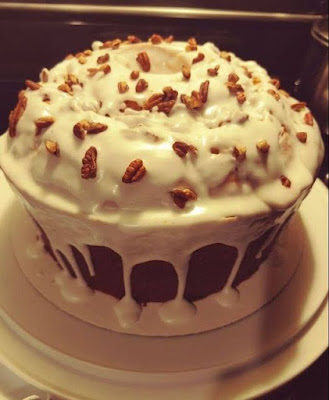Another Sweet Treat for the people!
INGREDIENTS:
2 sticks salted butter soften ½ cup canola oil
3 cups of white sugar
6 eggs large eggs
3 ½ cups sifted cake flour
1 tsp baking powder
¼ tsp salt
1 tsp butter extract
1 tbsp rum extract
1 cup of half and half
(For best results all ingredients room temperature)
DIRECTIONS:
Add eggs one at a time making sure well blended, add rum and butter extract. Gradually add flour, baking powder and salt (I start with a cup and a half, of flour, mix well, then another cup, mix well, and then last cup).
Gradually add half and half about ¼ cup at a time blending well and scraping bowl about half way through.
Pour into a grease tub or Bundt baking pan. Place in a cold oven, set temperature to 300 degree, and timer for 1 hour 30 minutes. Depending on what type of oven it may take 1 hour 45 or a little longer so do check by inserting a tooth pick, (I use shish kabob straws because they are longer), if clean when removed, remove from oven and cool on wire rack for about 20 minutes.
Gently remove from pan and cool for additional 30 minutes.
Glaze
2-3 cups confectioners sugar
Bacardi White Rum
Sift sugar or loosen with a wire whip in a bowl.
Gradually add rum until you have a very thick glaze (sorry I don’t measure, but I start with about 2 cups of sugar).
Using a soup spoon carefully glaze from the outer edge to the center, if your glaze run down too quickly, mix in more confectioners sugar to thicken.
Lightly or heavy the choice is yours.
Be creative, place Pecans halves on top before glazing or pecan pieces on top after glazing or if you’re southern both.
Note: Salted butter will keep several days on counter top so you’re always ready to bake.
If you forget to take eggs out put in a bowl and run warm water over to take the chill off.
Swann Down cake flour is my first choice of baking flour.
Half and half can be warmed in the microwave to take the chill off.
Use this receipt and change the extract favor and make wonderful lemon, vanilla, orange or whatever flavor pound cake you like.
Glaze for these cakes use water or milk and same extract you flavored the cake with, 1 tsp.
Yummy!
ENJOY!



No comments:
Post a Comment